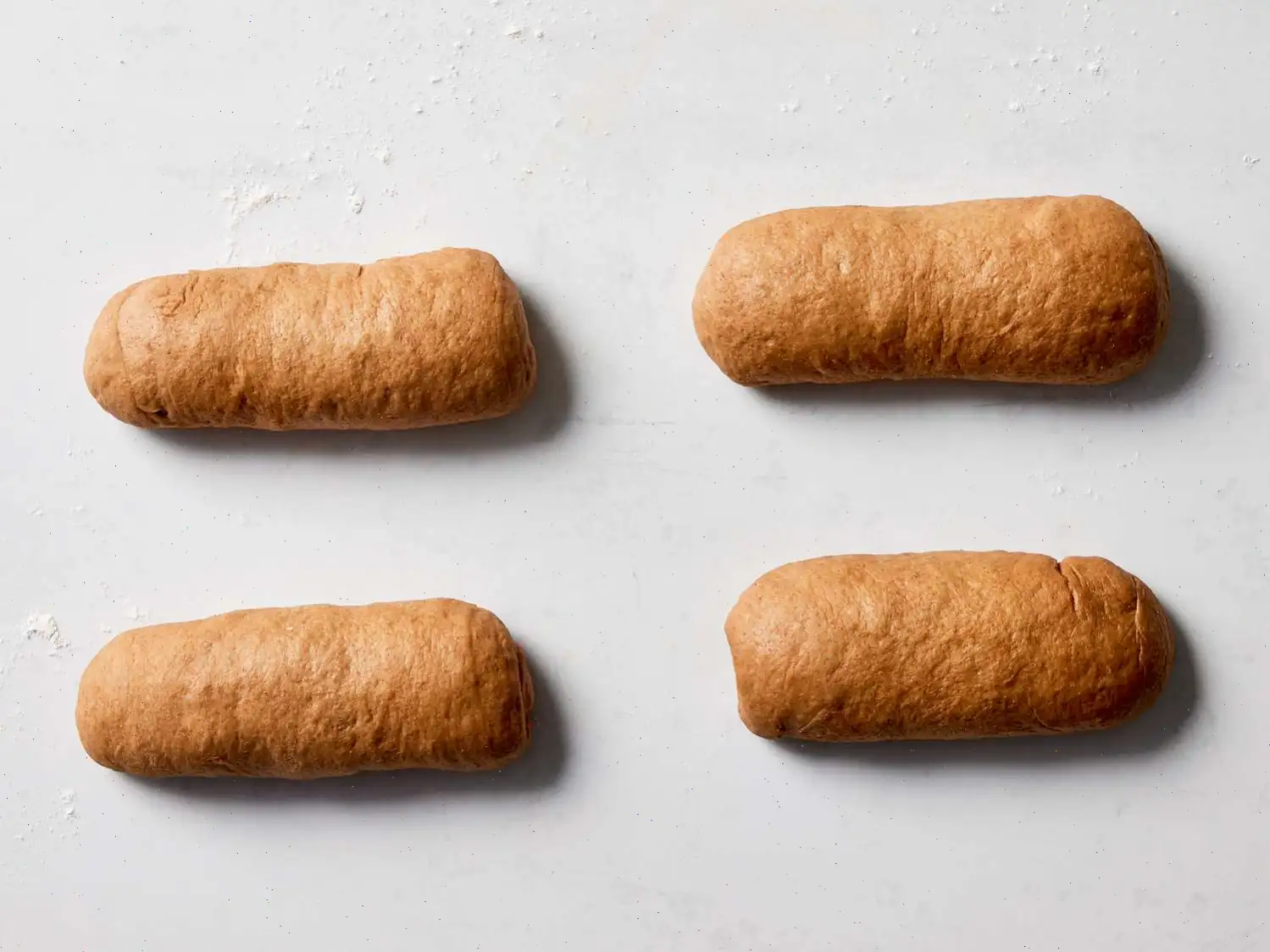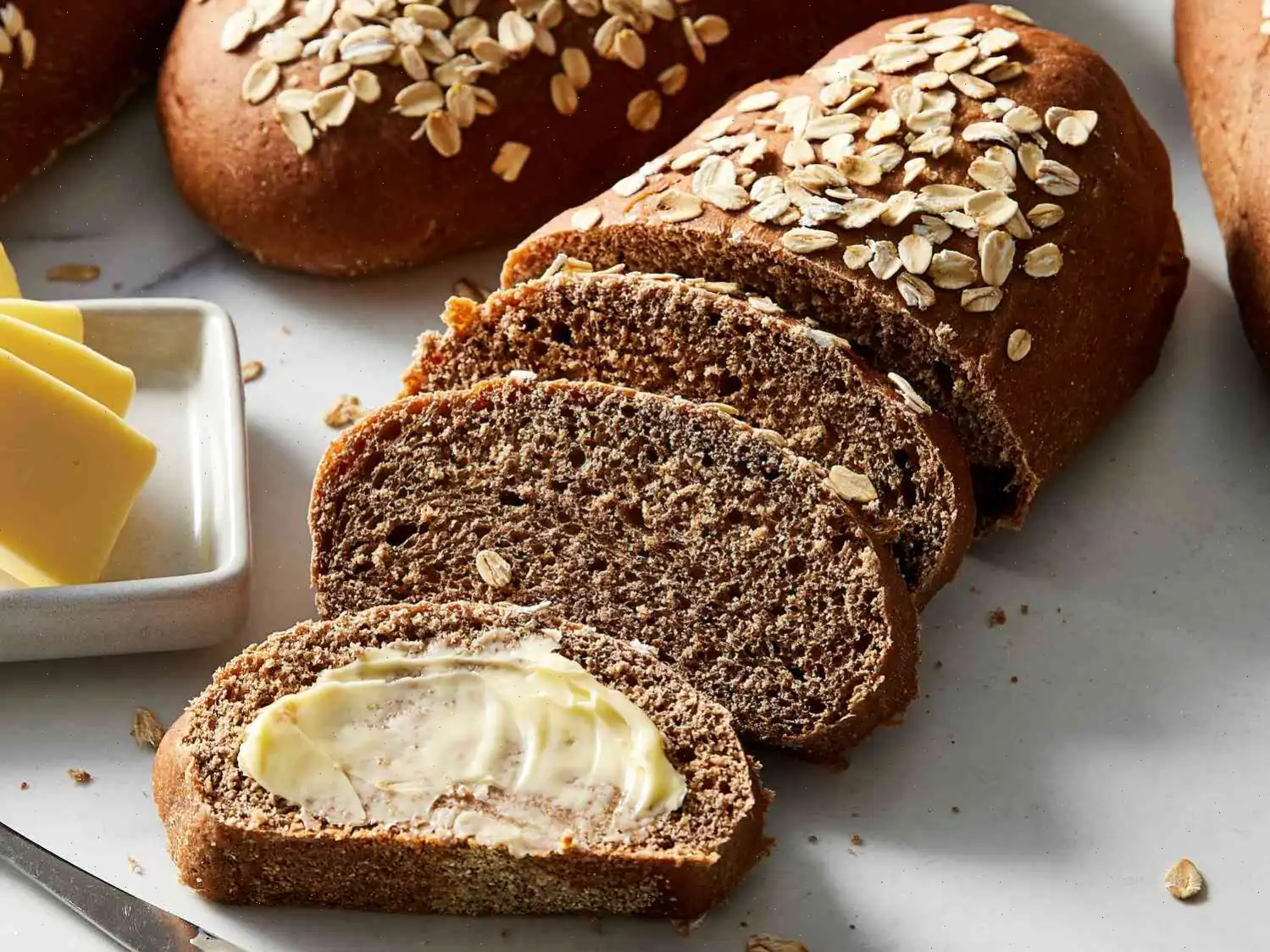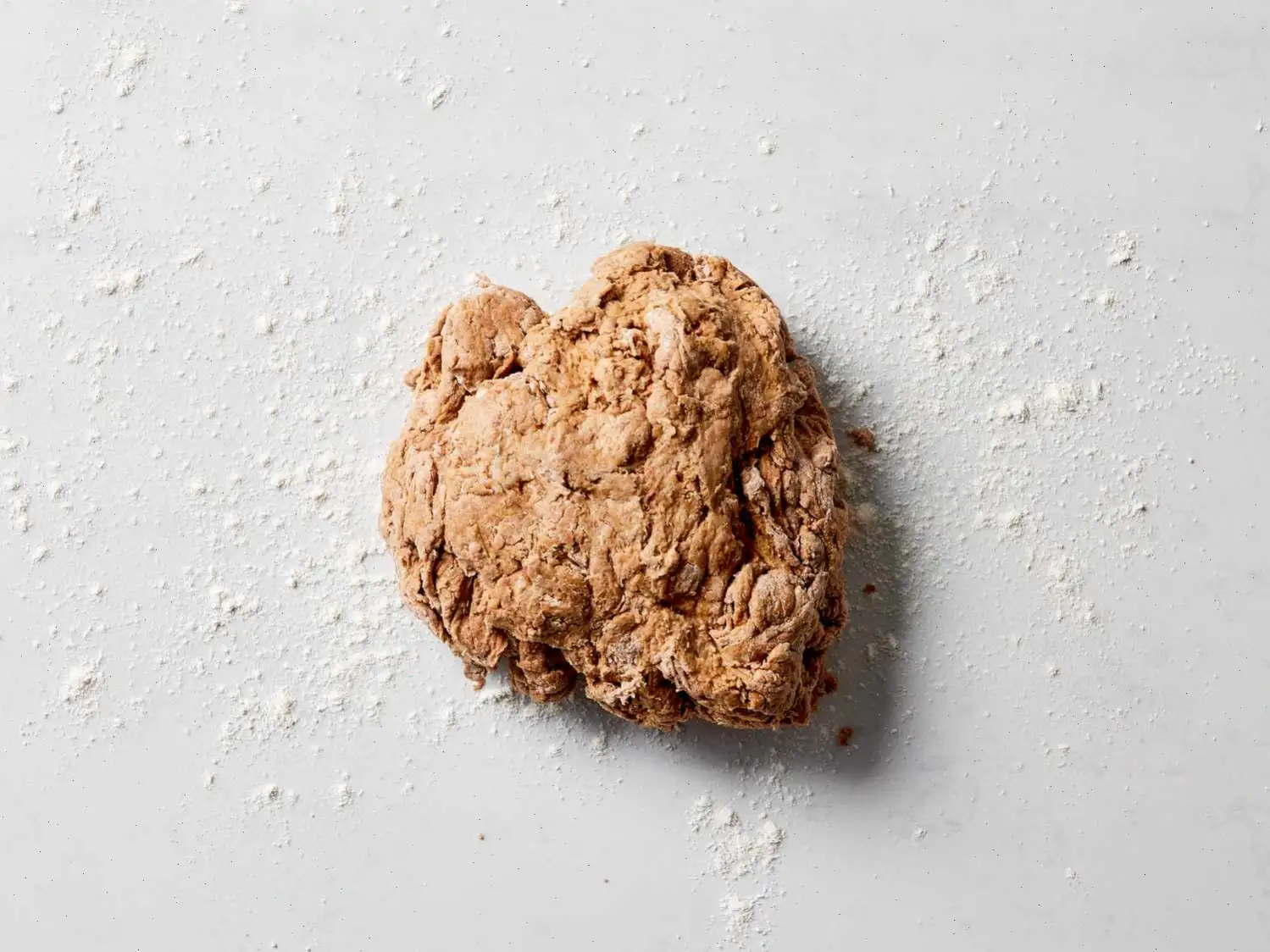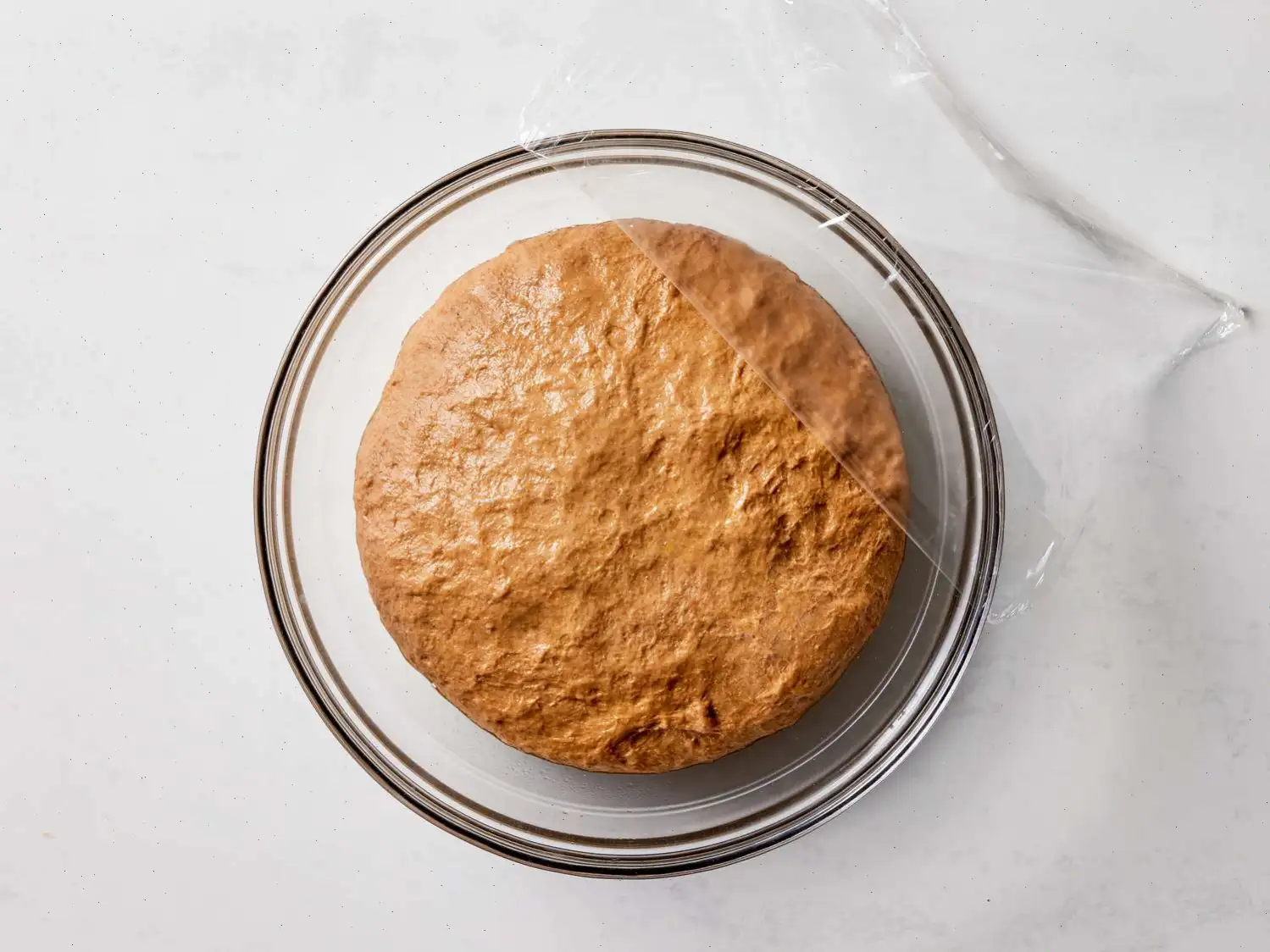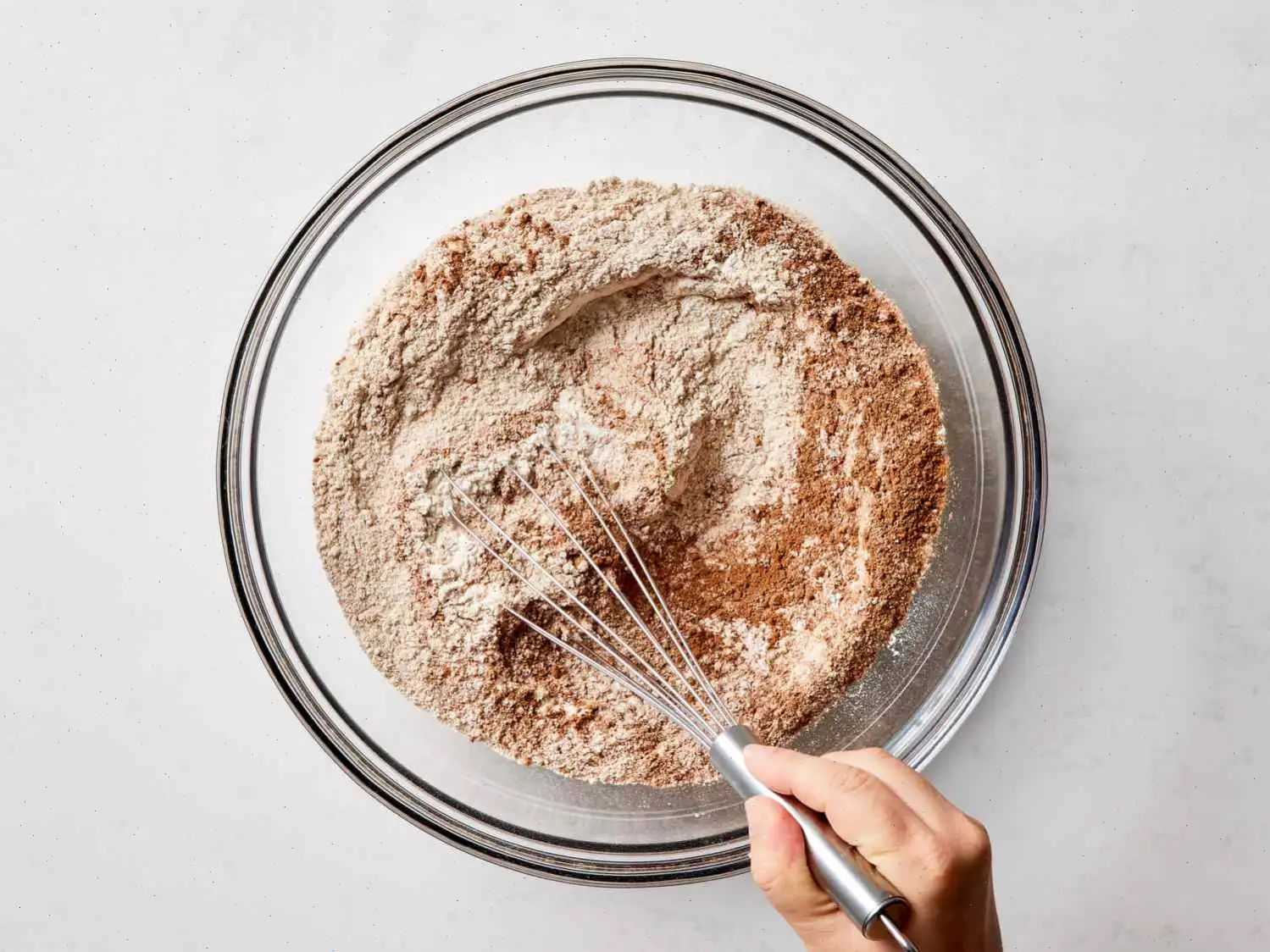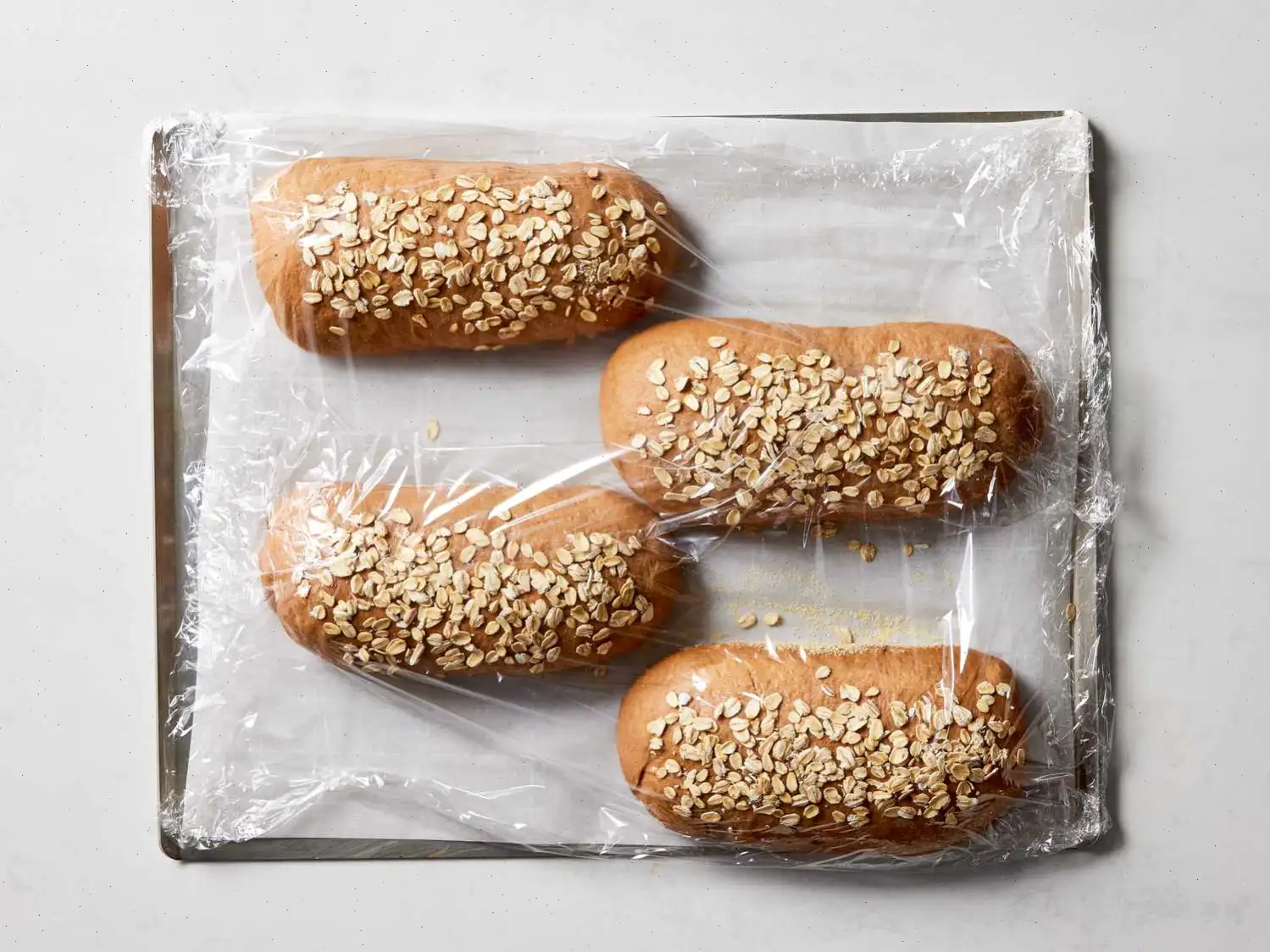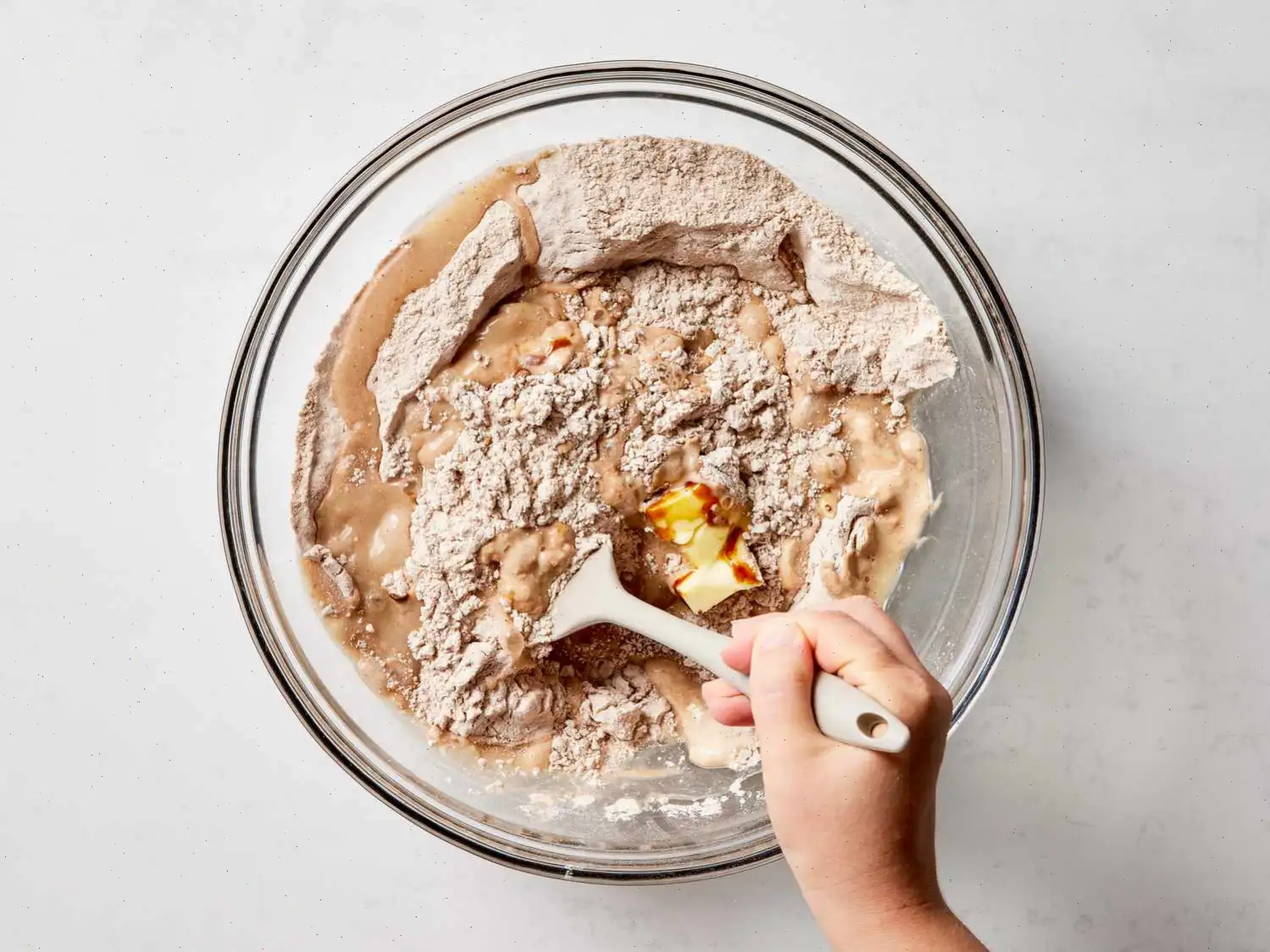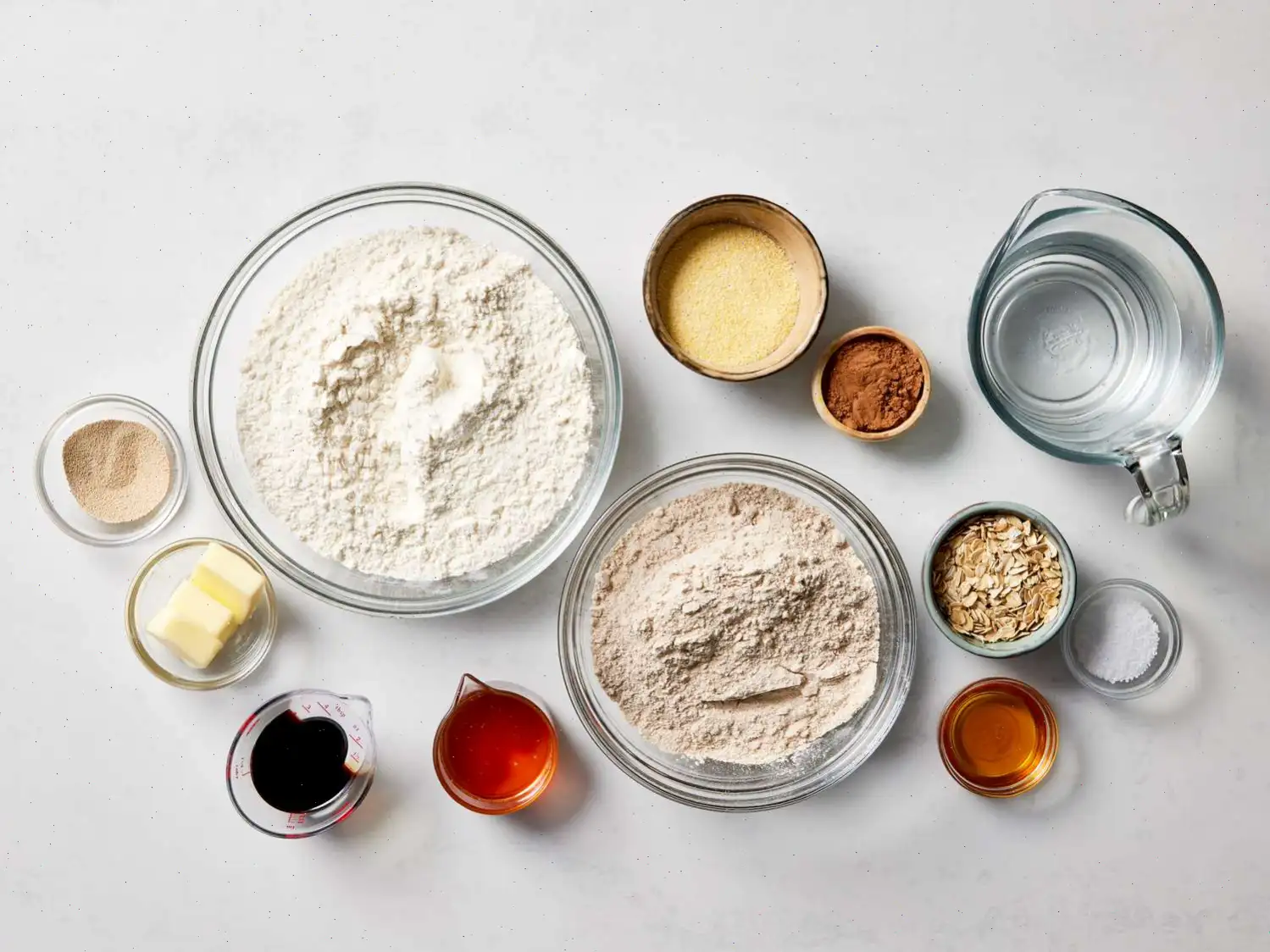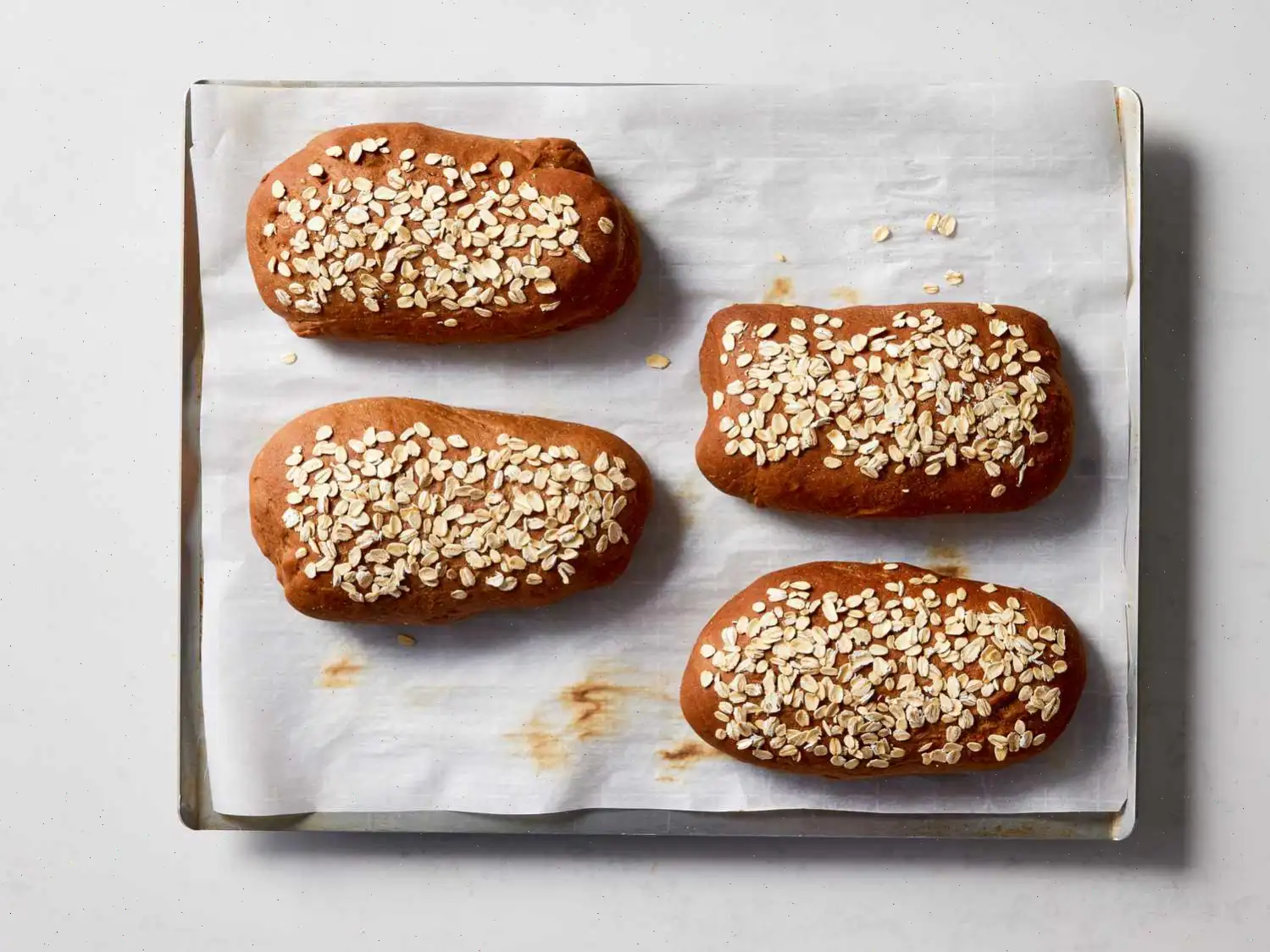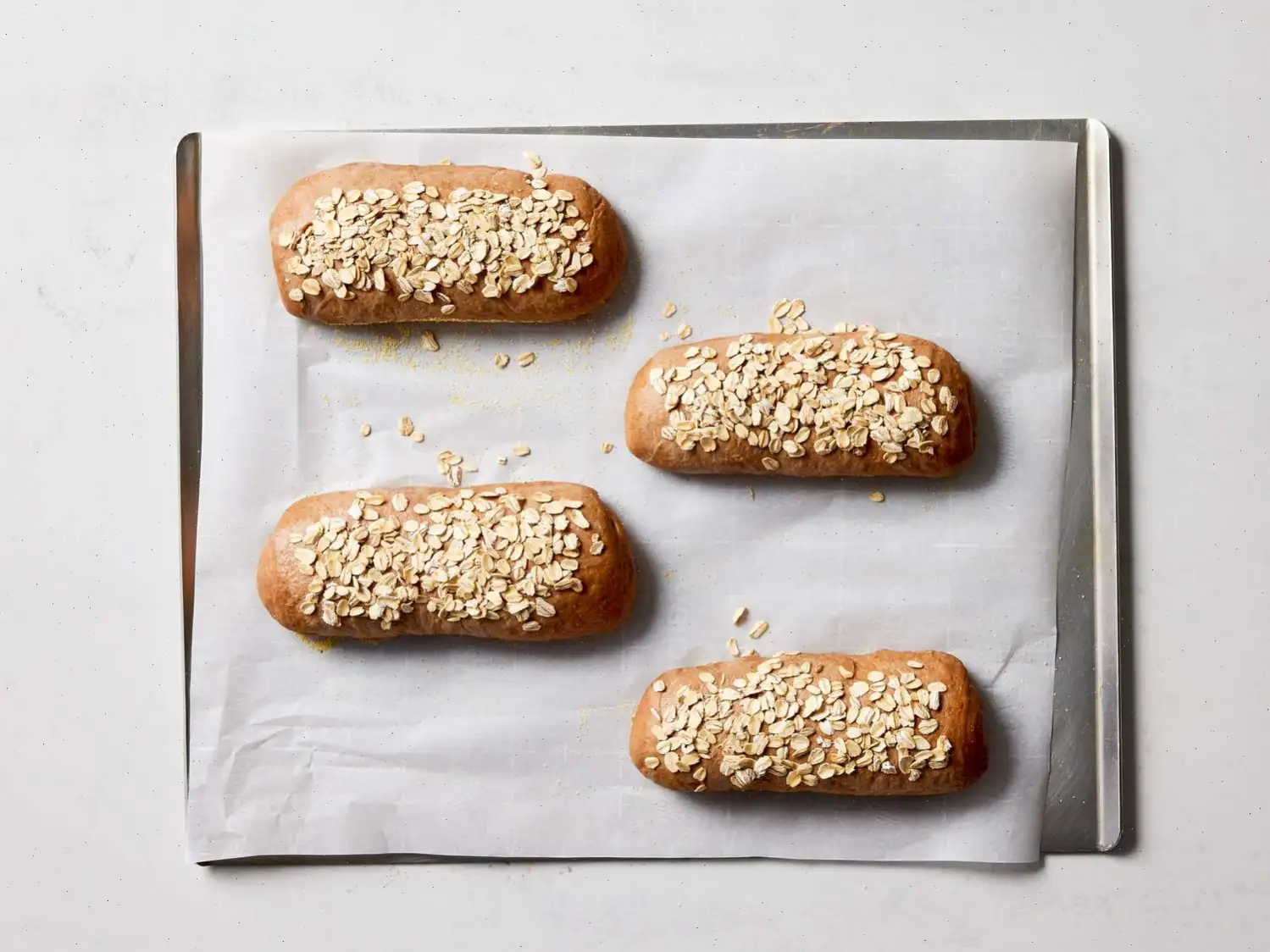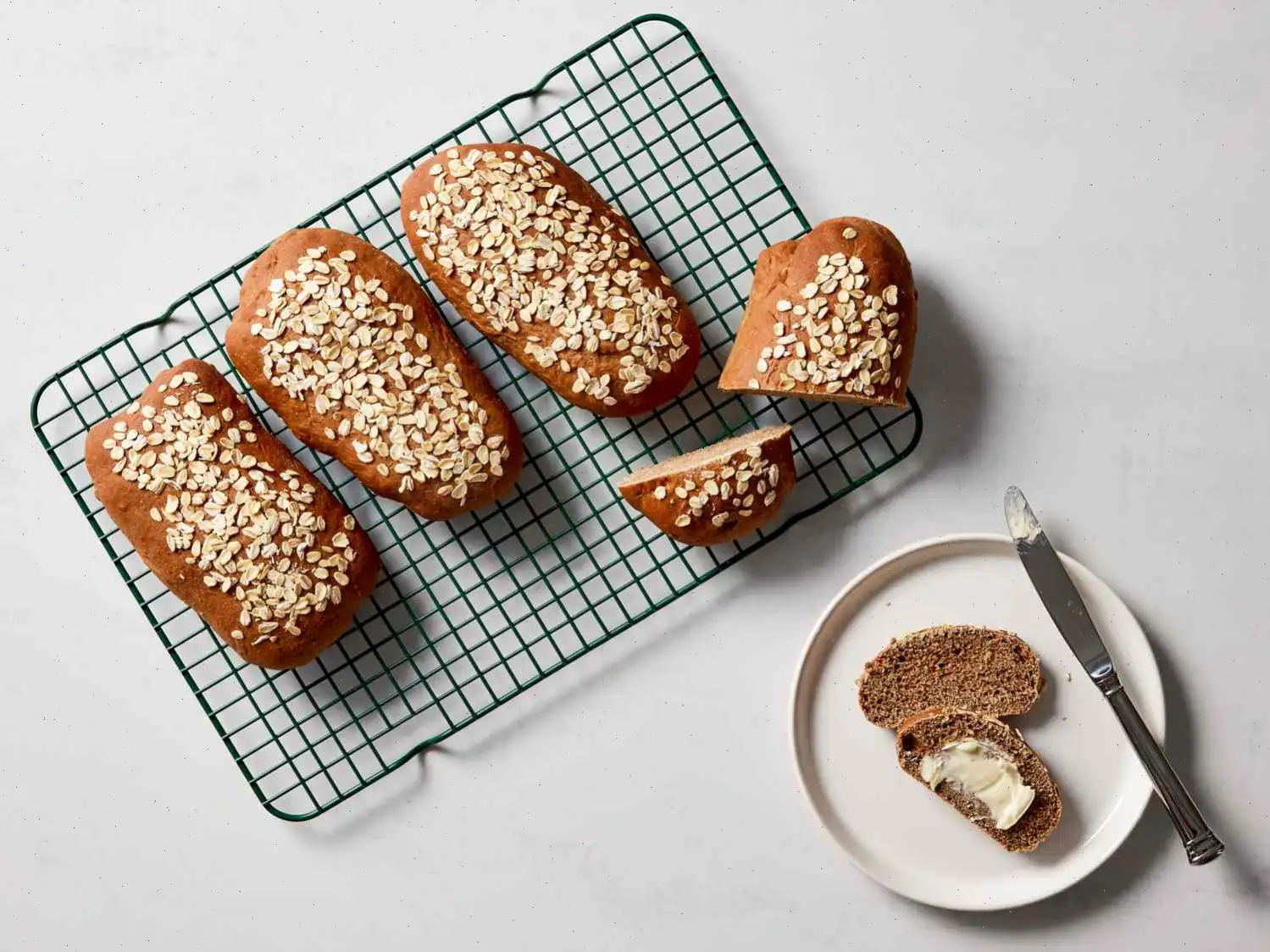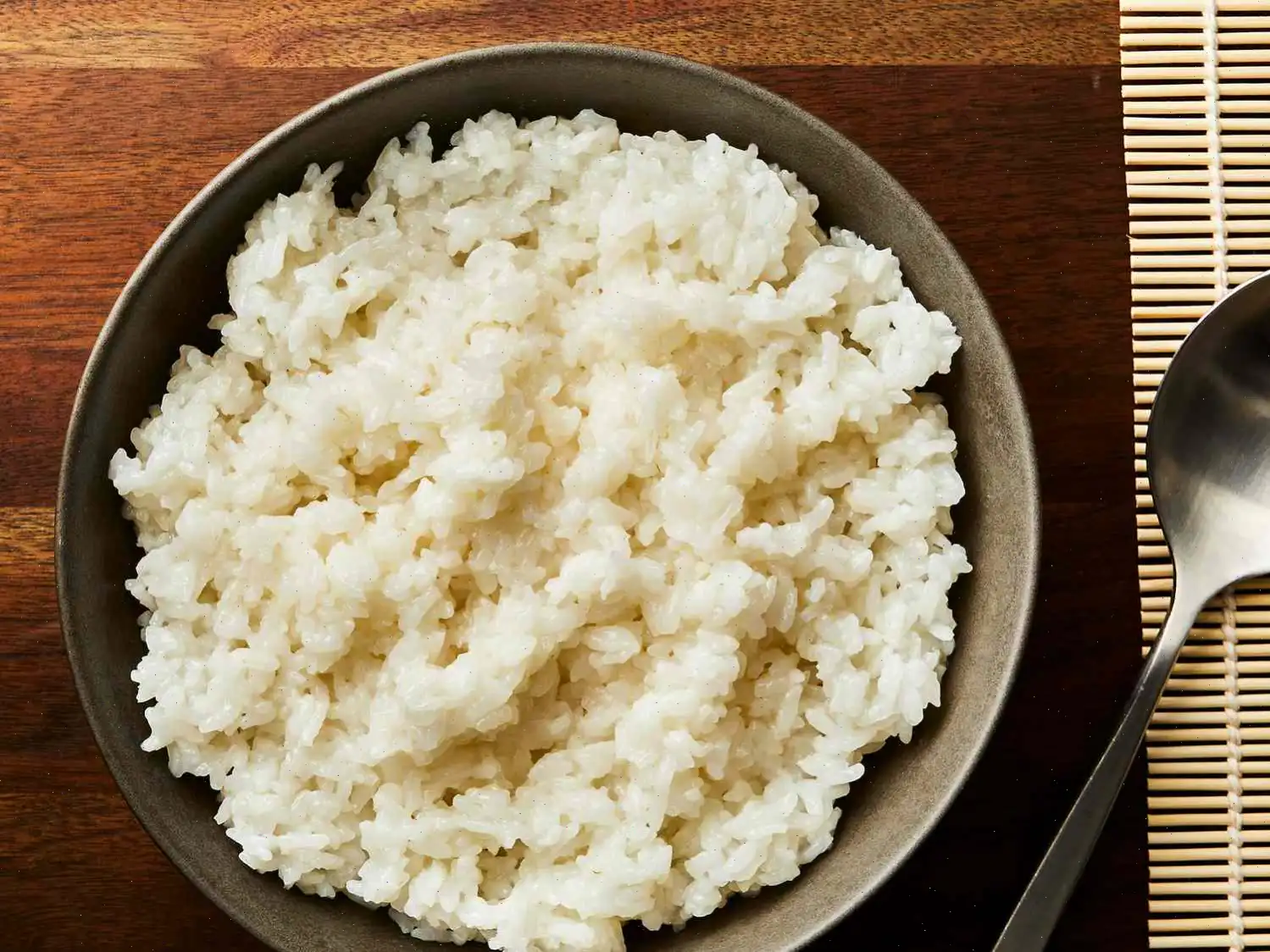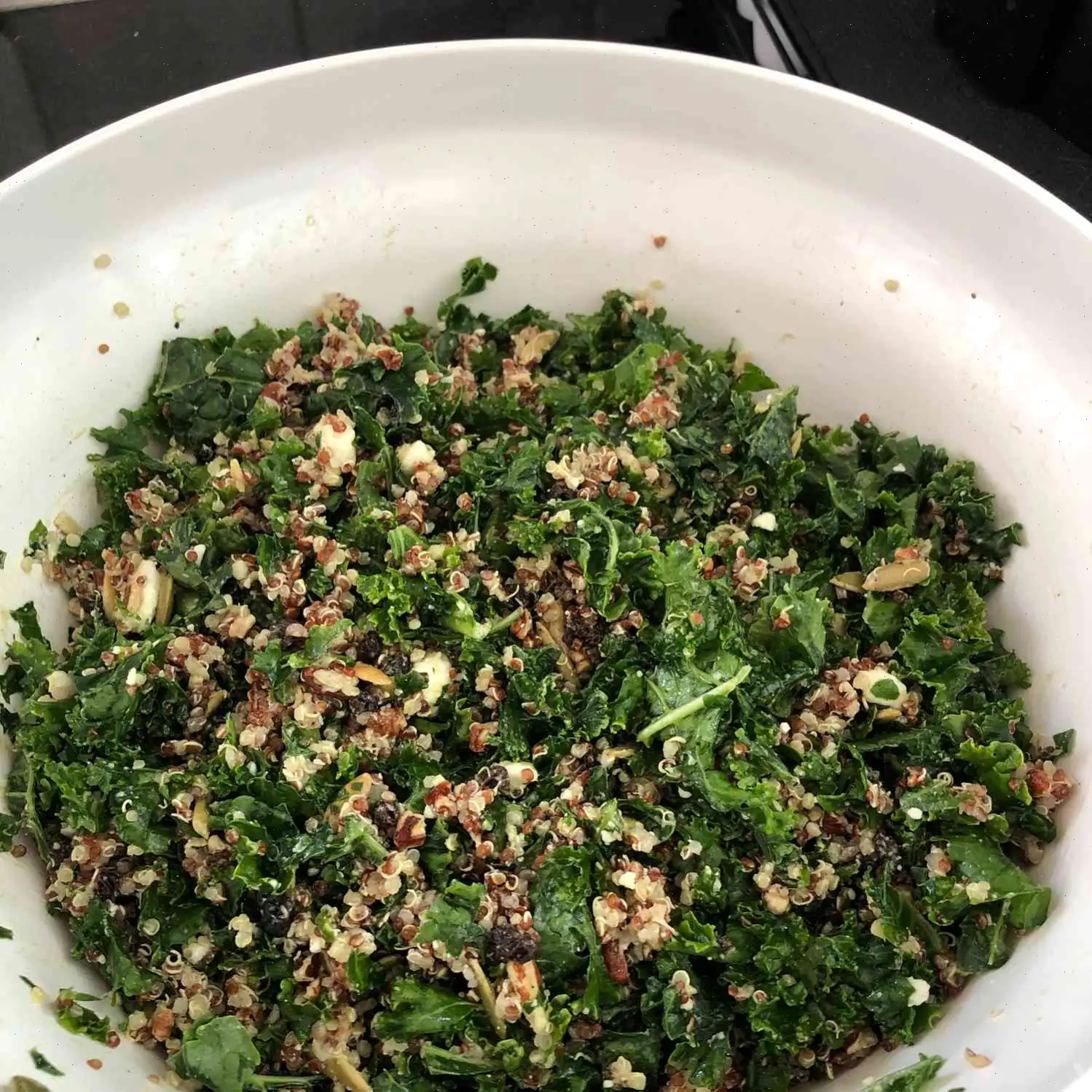
Copycat Cheesecake Factory Brown Bread Recipe
Ingredients
This recipe makes 16 servings. Measurements below are for the original yield; adjust as needed.
- 1 1/2 cups warm water (105-115F / 41-46C)
- 1 tablespoon honey
- 1 package instant dry yeast
- 3 1/4 cups bread flour, divided
- 1 2/3 cups whole wheat flour
- 2 tablespoons unsweetened cocoa powder
- 1 1/4 teaspoons salt
- 3 tablespoons butter, softened
- 1/4 cup honey
- 2 tablespoons molasses
- 1/4 cup cornmeal
- 1/4 cup rolled oats
Directions
- Gather all your ingredients to ensure a smooth workflow.
- In a small bowl, whisk together the warm water and 1 tablespoon of honey until fully combined. Sprinkle the yeast over the top and let it rest for 5 minutes, until foamy.
- In a large bowl, combine 2 1/2 cups bread flour, whole wheat flour, cocoa powder, and salt. Stir to blend the dry ingredients evenly.
- Add the yeast mixture, softened butter, 1/4 cup honey, and molasses to the dry ingredients. Mix with a wooden spoon until a rough dough forms.
- Turn the dough onto a lightly floured surface and knead for 5 to 8 minutes until smooth and slightly tacky. Add 2 tablespoons of bread flour at a time if the dough is too sticky.
- Shape the dough into a ball and place it in a greased bowl. Cover and let rise in a warm spot for about 1 1/2 hours, or until doubled in size.
- Punch down the risen dough and transfer it to a lightly floured surface. Divide it into four equal portions and shape each into a small loaf approximately 6 inches long and 2 inches wide.
- Prepare a baking sheet with parchment paper. Pour the cornmeal onto a plate and lightly coat the bottom of each loaf by dipping them into the cornmeal.
- Arrange the loaves on the baking sheet, leaving space between each. Lightly moisten the tops with water and sprinkle oats evenly over them.
- Cover the loaves loosely with greased plastic wrap and let rise in a warm place for 45 to 60 minutes, until nearly doubled.
- Preheat the oven to 350F (175C). Remove the plastic wrap and bake the loaves for 25 to 35 minutes, or until golden brown and a thermometer reads 190F (88C) in the center.
- Transfer baked loaves to a wire rack and allow to cool for at least 30 minutes before slicing and serving.
Nutrition Facts (per serving)
- Calories: 197
- Total Fat: 3g (4% DV)
- Saturated Fat: 2g (8% DV)
- Cholesterol: 6mg (2% DV)
- Sodium: 203mg (9% DV)
- Total Carbohydrate: 38g (14% DV)
- Dietary Fiber: 2g (9% DV)
- Total Sugars: 7g
- Protein: 5g (11% DV)
- Vitamin C: 0mg
- Calcium: 16mg (1% DV)
- Iron: 1mg (7% DV)
- Potassium: 126mg (3% DV)
*Percent Daily Values are based on a 2,000-calorie diet. Values may vary depending on your daily needs.
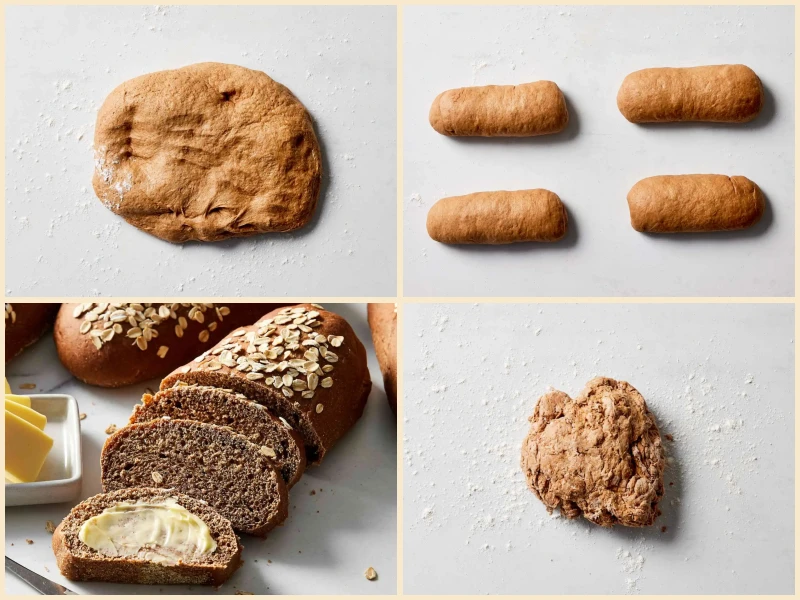
The History of Cheesecake Factory Brown Bread
The brown bread served at The Cheesecake Factory has become an iconic element of the restaurants dining experience. Its origins are tied to the classic American black bread traditions, which were influenced by German and Scandinavian settlers in the 19th century. These early breads were made from a mixture of whole wheat, rye, and molasses, producing a slightly sweet and hearty loaf. The Cheesecake Factorys version, popularized in the late 20th century, modernized this classic by adding a soft, light texture, a hint of cocoa, and a sweeter flavor profile that appeals to a wide audience. Today, this brown bread is recognized not just as a side dish, but as a signature culinary feature of the restaurant.
Regional Variations and Characteristics
While traditional American brown bread is dense and often steamed, the Cheesecake Factory brown bread is baked, giving it a lighter crumb and softer texture. Regional adaptations have also emerged across the United States. Some bakeries on the West Coast incorporate a combination of bread flour and whole wheat flour to balance softness and nutritional value, while East Coast versions may use additional molasses for deeper flavor. Rolled oats on top are a common addition in many regions, providing a slightly nutty texture and a rustic appearance. Despite these variations, the bread maintains its characteristic light brown color, sweet undertones, and moist interior.
Distinguishing Features from Similar Breads
Cheesecake Factory brown bread differs from other brown or whole grain breads in several ways. Unlike dense rye breads, it has a fluffy and tender crumb due to the careful balance of bread flour, whole wheat flour, and yeast. The subtle use of cocoa powder adds a warm hue and mild chocolate undertone without overpowering the bread, making it distinct from other sweet breads or molasses-heavy recipes. Cornmeal on the base and oats on top provide both texture and a decorative element, setting it apart visually and texturally from other brown breads that lack these features.
Serving Contexts
In restaurants, this brown bread is typically served as a starter or accompaniment to soups, salads, and main courses. Its mild sweetness pairs well with savory dishes, cheeses, or flavored butters. At The Cheesecake Factory, it is famously offered warm, with a side of whipped butter, creating a welcoming and comforting first impression for diners. Home bakers often serve it alongside family meals or as part of brunch spreads, appreciating its balance between indulgence and wholesomeness.
Interesting Facts
- The breads exact recipe is considered a secret at the Cheesecake Factory, inspiring many copycat versions online.
- The use of cocoa powder is not for chocolate flavor aloneit enhances the Maillard reaction, contributing to the breads appealing brown color.
- Molasses and honey are used together to create a complex sweetness that is both light and slightly tangy, distinguishing it from standard sweet breads.
- Despite its restaurant popularity, this bread has a surprisingly long shelf life if stored properly, thanks to its slightly higher sugar content and moisture-retaining ingredients.
- Oats sprinkled on top were originally added as a decorative element, but they also improve the breads texture and give a subtle nutty aroma.
You can listen to this recipe in AI audio format. Simply click the play button below to listen to the content in a format that suits you best. It’s a great way to absorb information on the go!
FAQ about Copycat Cheesecake Factory Brown Bread Recipe
Comments
Margaret Green
10/21/2024 07:17:06 PM
The recipe is quite simple to prepare, although waiting for multiple rises can be challenging. I found that dividing the dough into four loaves wasn't perfect, but all of them turned out wonderfully. I would definitely make this recipe again. The addition of cornmeal and rolled oats added a unique touch to the soft bread, making it stand out. My only criticism is that the amount of bread flour listed in the ingredients and the recipe instructions differ significantly. The ingredients call for "3 1/4 cups bread flour, divided, or as needed," while step 3 specifies "2 ½ cups bread flour." This discrepancy of 3/4 cup seemed too large for the slight adjustments I made. Despite the confusion, I followed the measurement in step 3, and the bread turned out perfectly.
Maria Sanchez
03/07/2023 10:02:24 AM
Review Update: I found this recipe to be reminiscent of the California Black Bread recipe, which happens to be one of my favorites. As someone who struggles with the density of whole wheat flour, I made a few modifications to suit my preferences. I substituted whole milk for water, added extra butter, and used a combination of all-purpose and whole wheat flour. Instead of proofing the yeast separately, I mixed it directly with the dry ingredients. However, I must emphasize the importance of proofing the yeast if unsure of its potency. I skipped the cornmeal and opted for shaping the dough into rolls instead. The end result was delightful - the bread turned out light and fluffy, without the usual heaviness associated with whole wheat flour. My family also gave it a thumbs up, so overall, a successful experiment!
Justin Jackson
01/27/2025 11:48:15 PM
Outstanding! The only adjustment I made was using a packet of rapid rise yeast and incorporating it into the dry ingredients, as I didn't have any regular yeast on hand. Other than that, I stuck to the recipe as is. I'm already looking forward to making it again.
Edward Diaz
03/15/2024 12:22:11 PM
I was a bit disappointed with how my loaves turned out compared to others, as they rose too much during the second rise and ended up looking deformed. Initially, I attempted to halve the recipe since it made 4 loaves, but I struggled with halving a yeast envelope and ended up making all 4 loaves. Despite the challenges, the bread turned out incredibly tasty - in fact, two of us devoured an entire loaf! I would definitely make it again.
Catherine Ramirez
01/03/2023 11:03:46 AM
Absolutely fantastic and foolproof.



